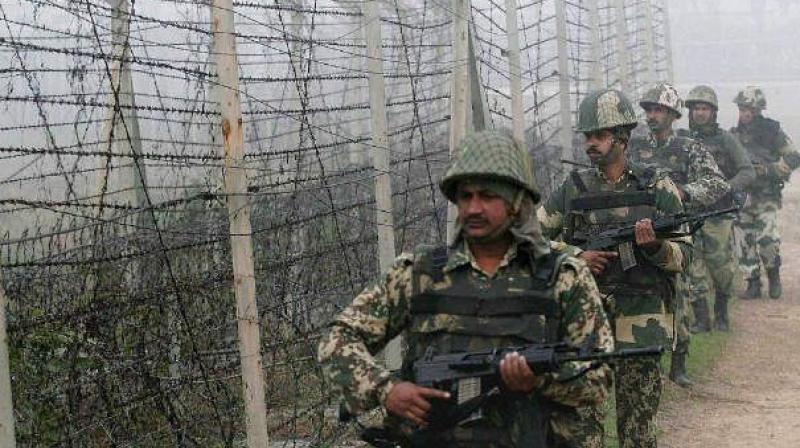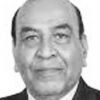J&K's Ramzan truce: A risk worth taking?

Three to four days into the “cessation of operations” (COO) initiative in Jammu and Kashmir, it is under severe criticism from almost all quarters. The main objections appear to be from the security community, which is livid that the momentum of operations, put in place by Operation All Out, has been broken. Many less-informed people are joining in too. Just a few months ago, a lot of people were lamenting that the robust way was not the only way to fight terrorism or militancy. The governments at the Centre and the state were also under attack for lack of alternative initiatives. To be fair to the critics, the move for the COO, or “truce”, took almost everyone by surprise. While I personally may not be fully convinced about the decision, I do admire the risk that the Central and state governments are taking. Why this was done and whether it will lead to any possibility of long-term peace is something that needs to be analysed. Already, as expected, the Lashkar-e-Tayyaba rejected the offer. The United Jihad Council (UJC), led by Hizb-ul-Mujahideen founder Syed Sallahuddin, is uncertain of its response; its initial utterance was that the COO reflected insincerity by the Indian government as it was only for a temporary period. It was a statement of the confused, those clearly on the backfoot due to the moral risk of refusing to honour the government’s offer.
We don’t know what the UJC’s final stance will be, but we must remember that South Kashmir’s militancy is no longer completely under Hizb’s control. Burhan Wani had showed the path outside HM’s control, but his entire group has been wiped out. The current operating elements in South Kashmir’s resistance have a diffused leadership, difficult to identify; hence decisions regarding the response to the COO may be difficult to take. Being extremely young and immature, their ability to respond with any sense of consideration will always remain suspect. With Syed Geelani, Mirwaiz and Yasin Malik, relatively marginalised but also toeing the “insincerity line” of the government, the overall response to the COO may not be what the authorities wanted. However, for the government and the Army, there is really no loss in this either. The latter will continue calibrating its operations based upon responses, although it’s not easy to do so. If the confusion in the separatist and terrorist ranks persists, the moral winner will be the government if it ensures fully sincerity in its actions and, more important, makes the statements from time to time through the month of Ramzan. Those who question the government’s wisdom of choosing Ramzan for the offer, and claim it is pandering to Muslim sentiment, forget that the government is working to a strategy.
A Ramzan truce offer puts the moral pressure on the other side; a refusal during this holy month won’t go too well with the people, and will place the government on a higher moral pedestal. I believe this offer should have at the outset included the period of the Amarnath Yatra, the iconic pilgrimage which will begin soon after Id-ul-Fitr. Chief minister Mehbooba Mufti has said it will be extended to that period if the response is positive, and that she is only taking one step at a time. That is a fair enough approach. In the complexities of the reasons why the government took the decision I can identify two primary ones. First, the dynamics of sustenance of the violent movement have changed from the infiltration from Pakistan-occupied Kashmir to local recruitment. In other words, it is the local boys now who are the core, and not the LeT’s Pakistani lumpens. The continuous operations, although achieving neutralisation of terrorists, were also fuelling local recruitment. In such a cycle the strength of terrorists is unlikely to reduce, and the military campaign can continue for long even though military space is well under the control of the security forces.
The space which is begging attention is the social one. The street turbulence by groups that include women and children, the flash mob interference at encounter sites and the near-suicidal mode the youth had adopted probably disturbed the government. Progressively, under such circumstances, it will not be long before the religious fervour could bring suicide bombing to our doorstep; that is a phenomenon related to Pakistan, Afghanistan, Iraq and Syria, and not to the sub-conventional proxy conflict in J&K, and we would like to keep it that way. The second reason I figure for the decision is that military operations, although highly effective, may have been seen as spurring sentiments to contribute to the separatists and their sponsors’ narrative that the idea of azadi was a doable belief, as turbulence in the streets was seen to be rising. This can at best be an assumption. The strategy could be to cool the environment by giving a temporary break, put the ball in the court of the other side and await a response. If none comes, the resumption would be automatic.
There is a justifiable apprehension that the break in operations will upset the momentum. To overcome such an apprehension, the government needs to advance the argument that the concept of operations under the “truce” does not involve the security forces taking a clean break, rather only ceasing its offensive operations involving search and destroy and cordon and search operations. All other operations involving counter-infiltration at the Line of Control, intelligence-gathering, road-securing and security of important installations will continue as before. Area domination in a defensive mode and night patrolling and ambushes would also remain in place to curb the initiative of the terror groups. The detractors of such a concept do point out that in the same mode in 2000-01, the forces saw an increase in casualties, leading to the initiative being withdrawn. Today, however, the strength of the terrorists is far lower. The government probably deserves to be given a chance but the success of its initiative, besides depending on the response, would also be contingent upon how quickly it can put together a campaign spelling its counter-narratives.

